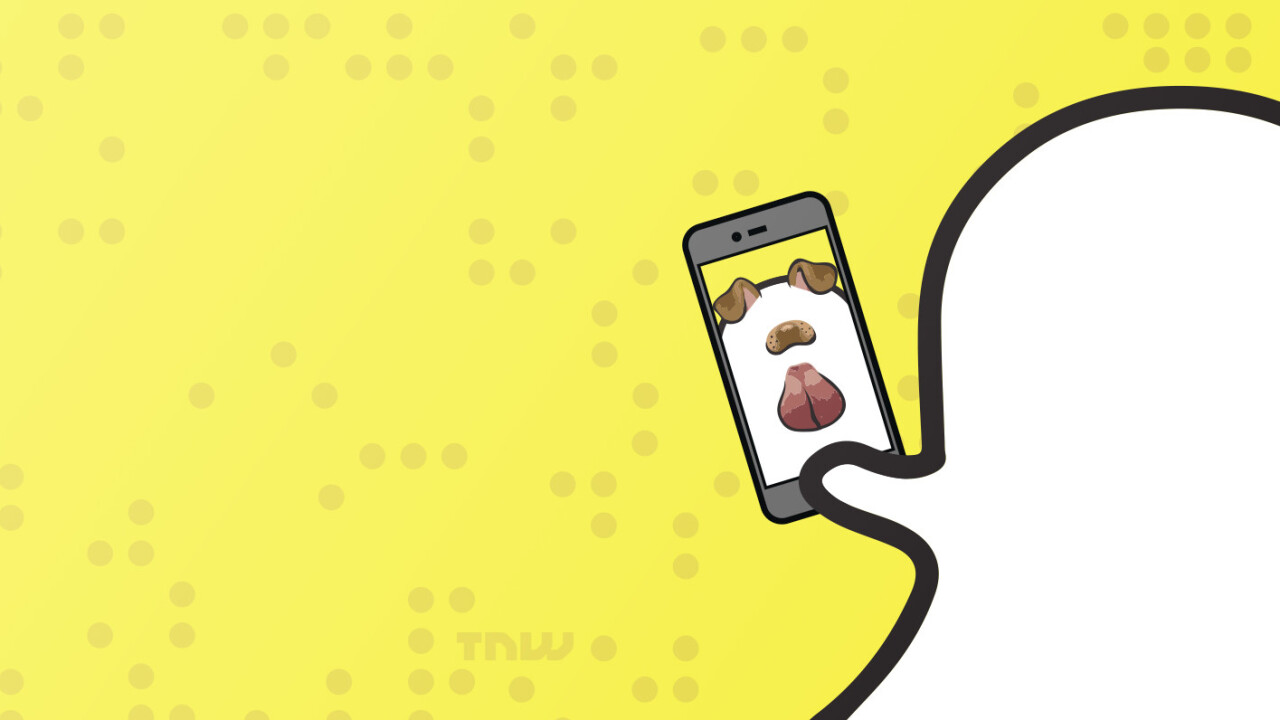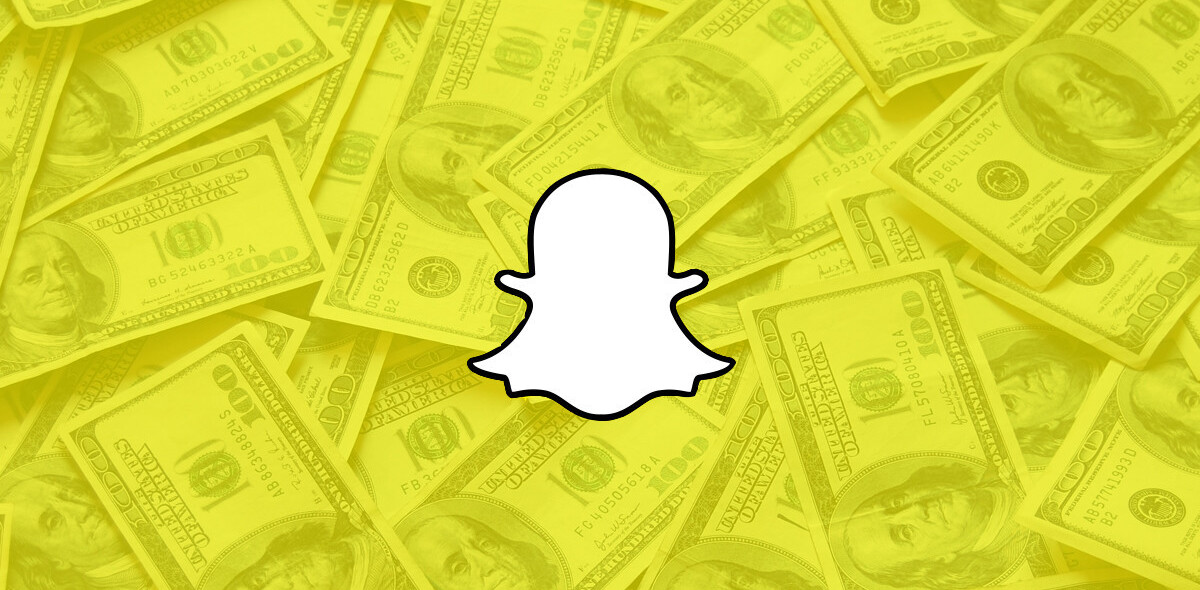
Not so long ago, people used to actively complain when an online video was filmed in portrait mode. Nearly all video was viewed landscape and these viewing habits dictated the format.
However, in just the past year or so, this silent yet pervasive trend has been completely flipped. A very important reason for this change has been Snapchat and their dogged insistence on pushing portrait video.
Embracing vertical video poses technical challenges for brands who would like to repurpose their video content on other platforms. This change also requires a different artistic eye and thematic bent.
This article will illustrate the factors underlying this 90º rotation in viewing preferences, their practical implications for marketers and the larger lessons this shift can teach us about the norms and expectations of the temperamental digital audience.
Vertical video syndrome
For the majority of online video’s existence, users detested vertical video.
This frustration came to a head in 2012 when popular YouTube channel, Glove and Boots (whom I’ve written about before) created a dedicated video and mini-site addressing the problem of what they dubbed “Vertical Video Syndrome.”
To quote one of the silly puppets (emphasis my own).
Vertical videos happen when you hold your camera the wrong way. Your video will end up looking like crap.
Although the sentiment here is expressed in a ridiculous way, it speaks concisely to multiple converging trends that were meeting at the time.
“CAMERA”
When the puppet says “camera,” what comes up on the screen are a pair of smartphones.
The increasing access to smartphones was a seismic shift in accessibility and connectivity in cameras that users and viewers were still learning to navigate.
The proliferation of internet-enabled, HQ cameras and widespread broadband coverage led to an equal boom in growing platforms for sharing the deluge video content they enabled people to produce.
The parameters and norms of these networks would come to largely define consumer expectations.
“WRONG WAY”
What makes vertical the wrong way?
In fact, if you think about it, the most common display orientation for those smartphones that were now cameras was vertical.
Sure they’d display in landscape if you rotated them, but the most common view was vertical.
Thing is though, that throughout the whole history of film and television, the displaying and enjoyment of AV content was all done via landscape screens.
Even at the time of this video-sharing boom, filming was done on phones but viewing was done (by and large) on desktops – which were roomy landscape screens too.
“VIDEO WILL END UP LOOKING LIKE CRAP”
Due to this implicit preference for widescreen, the platforms that initially spurred the photo/video-sharing revolution were tailor-made to wide, landscape viewing.
This was why vertical videos looked like crap. Not because of anything inherently wrong with the format, but because most (if not all) of the major video platforms and viewing devices were meant to support landscape videos.
Mobile eats the world
Roughly two years after the “Vertical Video Syndrome” video was posted, something drastic happened to the technological landscape.
As notable VC firm Andreessen Horowitz bluntly put it: “Mobile Ate the World.”
The whole presentation is worth checking out, but by far the most important slide for our discussion is one you’ve likely seen (a variation of) before:

Instagram upended the photo-sharing world, and a key component of their mobile-first formula was the imposition of a square 1:1 aspect ratio (I’m aware they’ve since relaxed these restrictions). Combined with an insistence that the app could only be viewed vertically, the motivation behind this choice became clear.
Square images could comfortably occupy a vertical feed, or fit neatly into a grid. Instagram imposed this norm to accommodate a predominantly vertical frame of reference.

Taking a look at the graphic below, it’s clear that Snapchat made a similar conscious distinction with how they chose to design for mobile.
For the desktop-first generation that was viewing on early video-sharing platforms, vertical video was a nuisance.
But the younger, mobile-first set saw things differently. They viewed the world through their phones, and the idea of flipping that screen every time they wanted to watch a video was more of a nuisance than a narrow aspect ratio ever could be.
Crossing the chasm
Geoffrey Moore’s watershed book covering new-wave tech adoption, Crossing the Chasm, describes how technologies make the leap from niche to mainstream.
He argues that within any emerging market, people do not make decisions in a vacuum. Rather, they actively reference each other and specifically look to consumers within the “innovative” set of the market.
This goes double, if not triple, within the world of social media; since (due to network effects) its value is inherently referential.
In order for a technology to vault over the gap between niche notoriety and broad market acceptance, it must engage the early majority.
The vertical video trend took off precisely because it was allowed to incubate in Snapchat’s growing yet niche audience.
Once enough people were tapped into the Snapchat ecosystem and interacting with vertical video, the rest just fell into place.
Another critical component of Snapchat’s success was the distinctly tough learning curve required to figure out the in’s and out’s of the software. The inability for outsiders to join without committing actually lent ammunition to the power of the early majority to finally bridge the gap into the mainstream.
You couldn’t get in unless the community let you in. Common wisdom dictates that this is a surefire way to get curious bystanders to line up and sign up in greater numbers.
Confusing the ‘0lds’
Put another way, one major key to Snapchat’s success is that the majority of those over the age of 24 likely do not know what “major key” means to the Snapchat world. Let alone who imbued this obscure emoji with its now iconic status.

Ever since he got lost on a jet-ski and gave live, motivational updates of his mishap via Snapchat, B-list rap-producer DJ Khaled has become the undisputed king of the platform.
So much of what works about his Snapchat presence is how off-the-cuff and self-referential his slew of selfie updates are.
DJ Khaled, and other Snapchat tastemakers do not simply flip their videos and call it a day. They have completely re-oriented the tone and norms of their content to suit a new platform and set of audience expectations.
The vertical video ethos
Although social media platforms have certainly disrupted traditional media in the past, I would like to argue that none has changed the video landscape quite like Snapchat.
Platforms like Facebook, Twitter and YouTube diminished many of the barriers to entry for content creation and distribution, but there was still quite a high value placed on creating relatively polished content with staying power.
Even the real-time, digital stream-of-consciousness Twitter wanted to foster tended to favor content that would hold up to repeated viewing. Posts needed to feel off-the-cuff while actually being slightly better than what came off the top of your head.
Snapchat’s ephemeral messaging platform completely re-wrote the rules of sharing. Once you sent a snap you couldn’t take it back; and once you saw a snap, you couldn’t see it twice.
While many of the permutations of Snapchat’s content options have since loosened, the fundamental appeal – the impermanence of posts – still remains.

So many have flocked to Snapchat precisely because the perfectly manicured and premeditated sharing experience is stressful and lacks the authenticity that this incumbent generation has been starved of and desperately craves.
Gen Z doesn’t want to feel pressured to filter their own self-expression, and they are seeking to connect with brands and celebrities who share that same self-confidence and lack of inhibition.
Snapchat thrives off the spontaneous, the novel and the unique. If long-form video content is epic poetry, Snapchat is haiku.
Due to the limited range of expression, relationships must evolve over time. Inside jokes and past snaps act as short-hand to bridge the gaps bound to come out of spontaneous, unplanned interaction.
DJ Khaled’s “major key ?” is so brilliant precisely because it doesn’t make sense if you don’t already know him.
He uses it when he’s not quite sure how to say exactly what he means; instead, relying on the fact that his fans and followers “just get it.”
When it comes to this kind of sharing, brands freak out because they can no longer completely control their message.
In fact, engagement is inspired by the blanks they let their audience fill in on their own.
Vertical integration: Many ways to share
As Snapchat has moved to monetize, they have rolled out a host of different options for brands to reach their fans.
The most accessible, yet time-intensive option is to build and interact with your following the old-fashioned way. By regularly posting great stories, organically acquiring new followers and consistently being active on the platform.
However, for brands with cash to spare, there are quite a few paid options for promotion that range from relatively affordable to prohibitively expensive.

Discover advertising

Snapchat now gives a few publishers designated slots within a separate tab to offer rich, custom content to the entire Snapchat audience.
While Discover channels are still closed to all but a few partners, any brand willing to can advertise on these channels.
Even though the rates have been slashed by a factor of five, the rate of $20 per 1,000 impressions still translates to roughly $50,000-$100,000 per campaign.
Live stories

Live Stories are up-to-the-minute coverage of big events from around the globe.
For a price, brands can insert a ten-second ad amidst the event coverage.
These ads generate a good deal of views (often in the tens of millions) and thus their $0.20-per-view price point can quickly get very expensive.
For brands seeking more specified and/or limited exposure, they can opt for slightly less pricey “Local Stories.” As the name suggests, these stories only run in specific localities (e.g. Los Angeles, New York…)
On-demand geofilters

Snapchat users have long had access to filters that featured contextual, location-based artwork. However, up until recently, these were non-promotional and strictly community generated.
In a step to increase accessibility to their ad-platform, Snapchat introduced “On-Demand Geofilters” which can be used for either personal or business use.
Starting at just five dollars (for personal users) anyone can specify a location and duration, then send out their custom Geofilter to all users who take snaps in that area.
The customized image overlay will show up as users swipe through their options.
How to flip your ads effectively
Sure vertical video is great and the newest, hippest thing around; but traditional video is still highly relevant and now you have to manage two different formats.
After a whole long page summarizing the potential benefits of vertical videos, Snapchat makes quite an underplayed admission:

Shooting ads is already difficult enough, so being forced to re-shoot them can place a big strain on timelines and budgets.
For brands with an existing process/format for creating videos, this flipped view can present a massive headache.
In a fantastic article profiling Snapchat, Bloomberg takes readers inside a specially retro-fitted “Snapchat Studio” Tastemade (one of Snapchat’s Discover partners) has built, and highlights specific strategies they’ve adopted to ease creation for widely differing video formats:
[The set is] roughly 15 percent skinnier than a standard set and has cameras turned on their sides. Tastemade still has to fill up the other platforms, so it shoots the rest of its videos horizontally on high-resolution cameras, while keeping the action in the middle third of the screen so the footage can also run on Snapchat. TV monitors in the studio are marked with black tape that shows the Snapchat version’s frame. Afterward, segments are edited into multiple cuts: vertical for Snapchat, square for Instagram and Facebook, horizontal for YouTube and Apple TV.
Vox Media is another example of a savvy creator taking this consciously repurpose-oriented approach. If you look at their (excellent) YouTube content and pay attention, you can see this same strategy in play.
The horizontal videos make sure most of the live-action is in the middle third of the frame, and then graphics can fill the side (which can be shuffled around for different uses).

This pressing need for brands and content marketers to consciously plan for multiple iterations, orientations and context for their content doesn’t just apply to Snapchat and vertical video.
The proliferation of platforms and their increasing necessity in distribution is putting pressure on marketers to for an ever-expanding set of specifications.
I’ve written about repurposing before, but I talked about it more as a nice tactical advantage, not a necessity.
But times have changed.
Repurposing is no longer a “hack,” it is an absolute necessity. There are too many platforms to create content for today that doing it for each channel individually would put you out of business.
Snapchat and vertical video might be a recent dramatic change, but the adoption and dovetailing of content into countless different forms will continue to punish brands who approach marketing and content creation as a one-size-fits-all endeavor.
Get the TNW newsletter
Get the most important tech news in your inbox each week.





